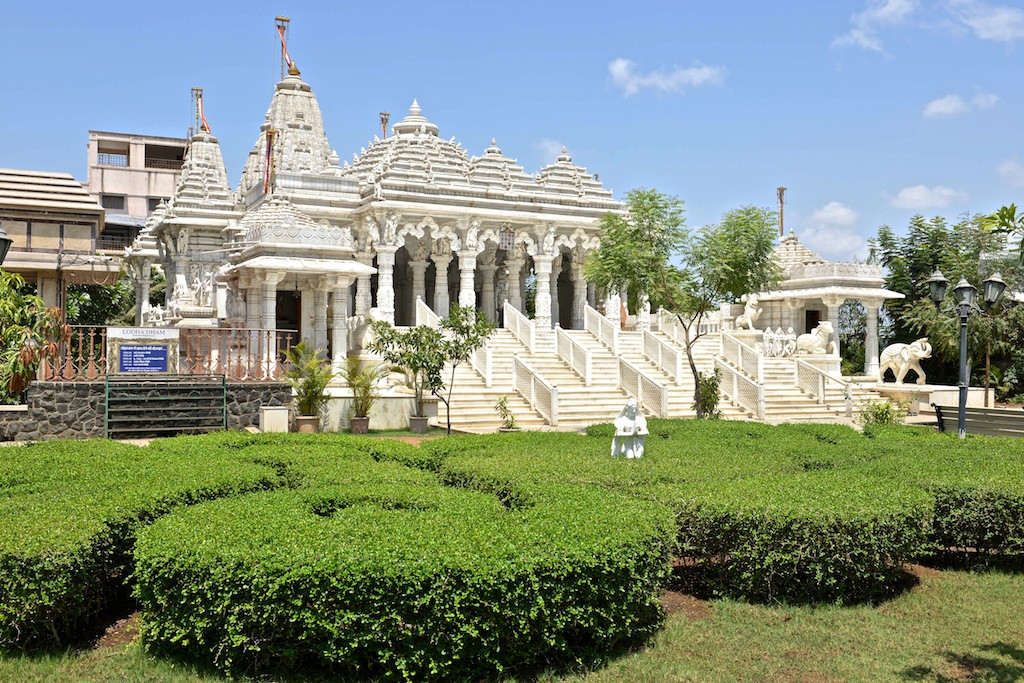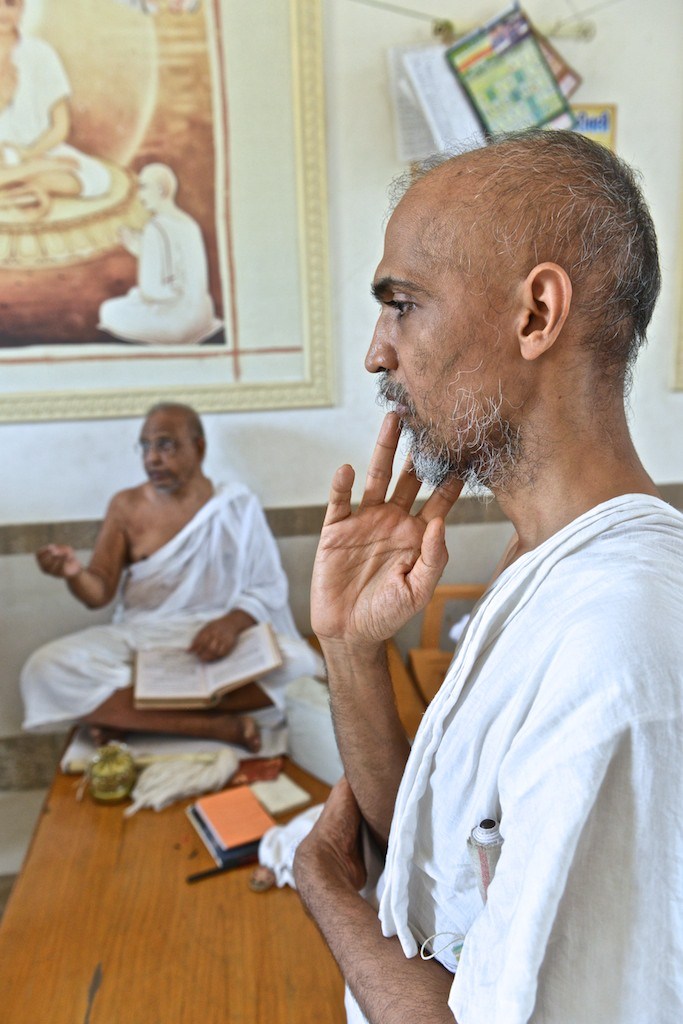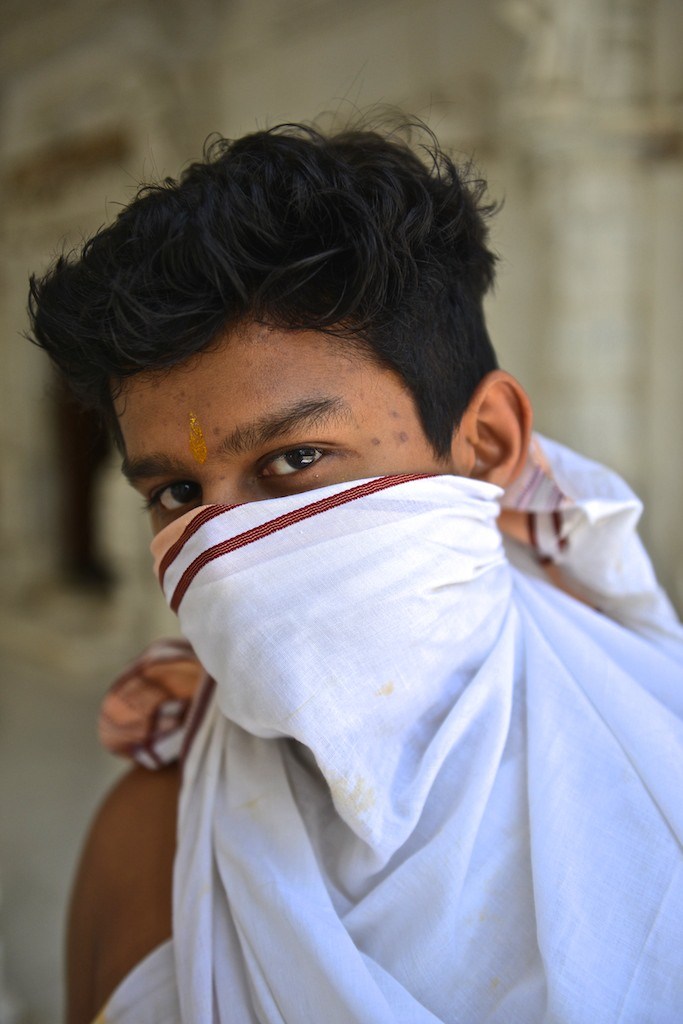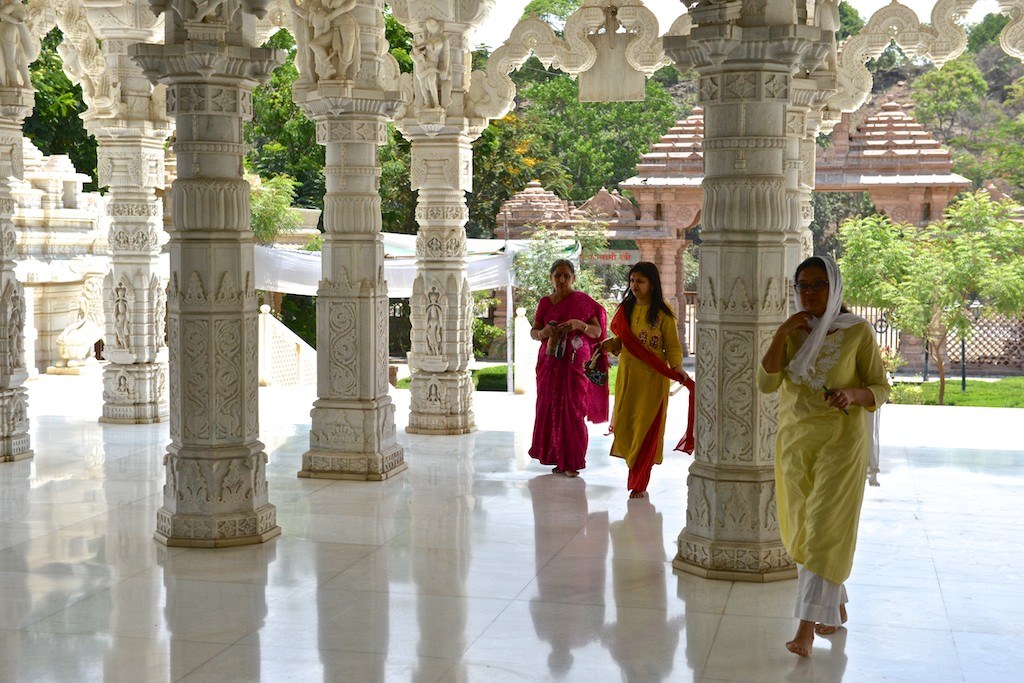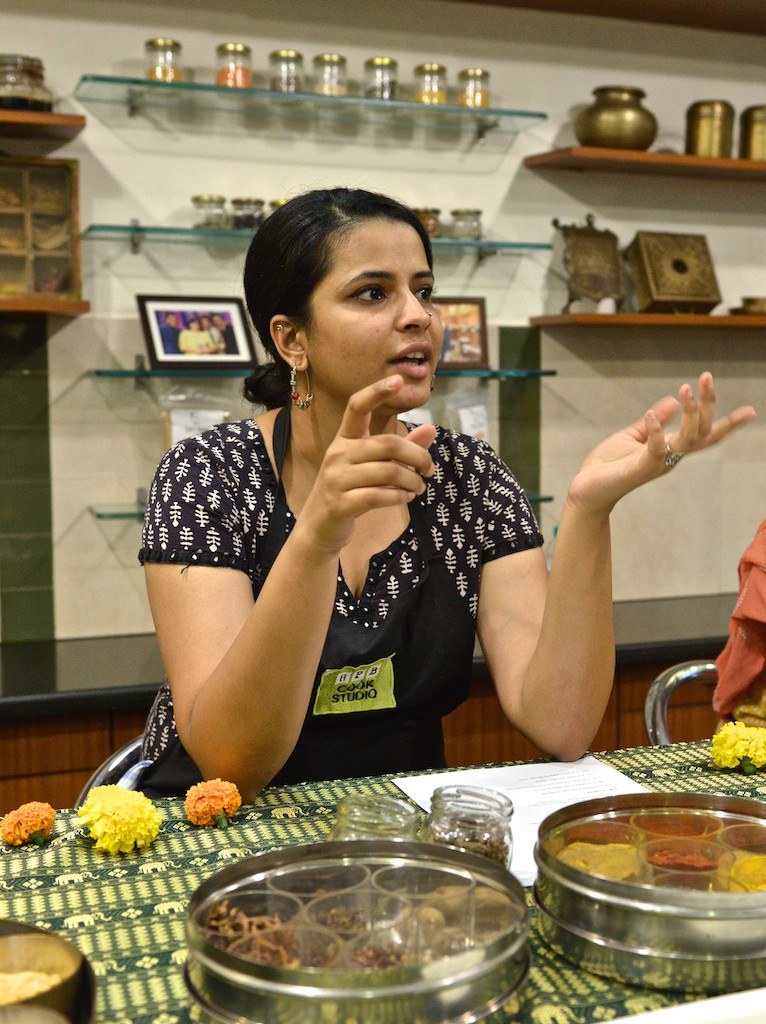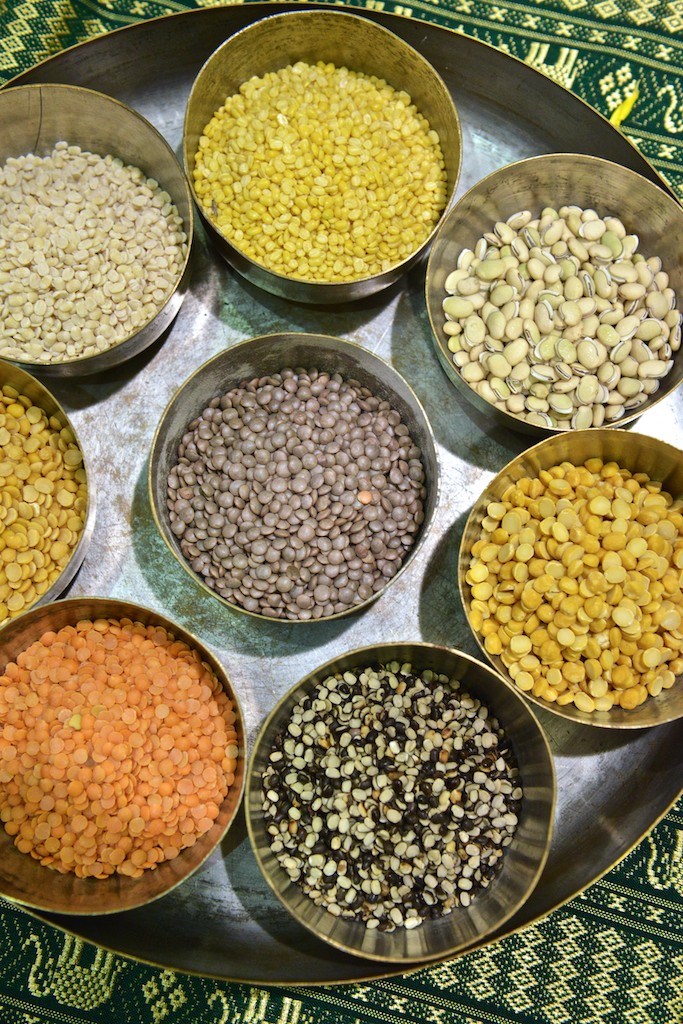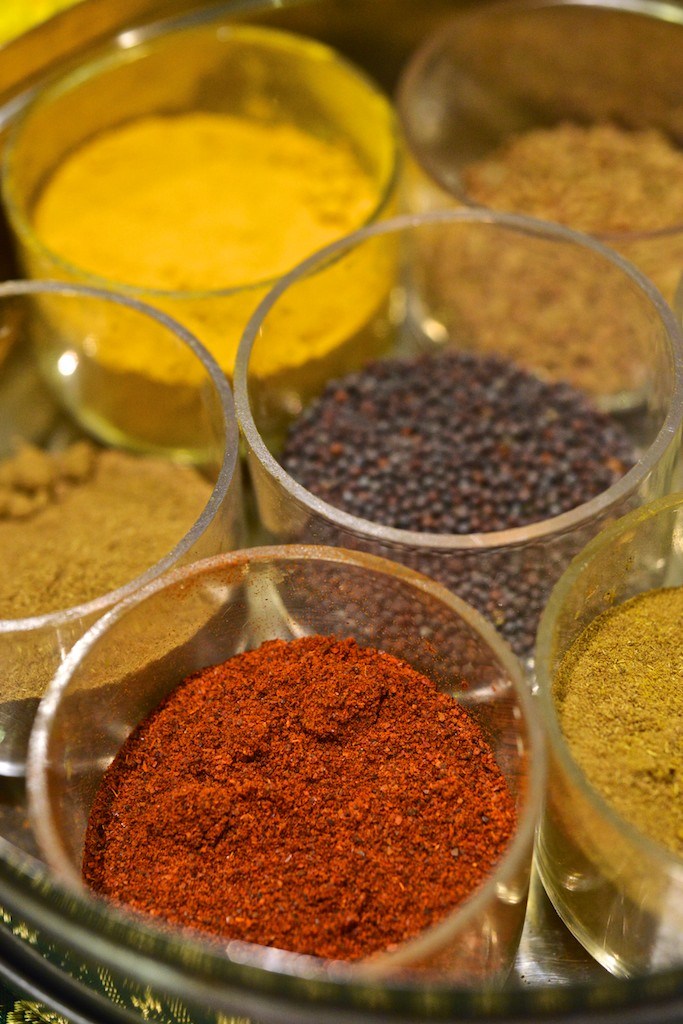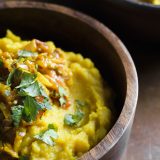With one hand clutching their billowing white robes to their faces—shielding the gods from their breath—the teenagers use their other to tenderly, methodically dip and wipe, dip and wipe, dip and wipe, a meticulous wash and repeat in which they carefully dab milk on, then off the stone deities they kneel before.
Such is the pace of life at Lodha Dham Temple, an open-air Jain monastery where stacked stone spires, towering pillars and marble floors glow a blinding white in the sun. Tucked off a dusty stretch of Ahmedabad Highway just 90 minutes north of Mumbai, life here is lived pared. No vehicles. No electricity. No money. And no touching trees, grass or flowers.
But look closer and fine details emerge from the starkness. Those spires and pillars are etched with impossible intricacy, the floors embedded with stone flowers. Even the prohibition of walking on grass is an attention to minutia; to spare the suffering of even the most minor of creatures that might hide in the greenery, the monks tread only on stone.
All of which makes the temple if not the most obvious, then certainly a most natural place to discover one of India’s simplest dishes, dal tarka. As so many in the West do, I thought of it as little more than a bland porridge of yellow lentils. But as with Lodha Dham Temple, there are deep nuances and textures if you are willing to see them.
Indian food, of course, is a misnomer. This massive country is home to numerous cuisines. They may share ingredients and techniques, but the food itself varies—sometimes tremendously—by region, city, even street. Dal tarka is one dish that straddles lines. Some version of the dish—essentially stewed and seasoned lentils—is found across India.
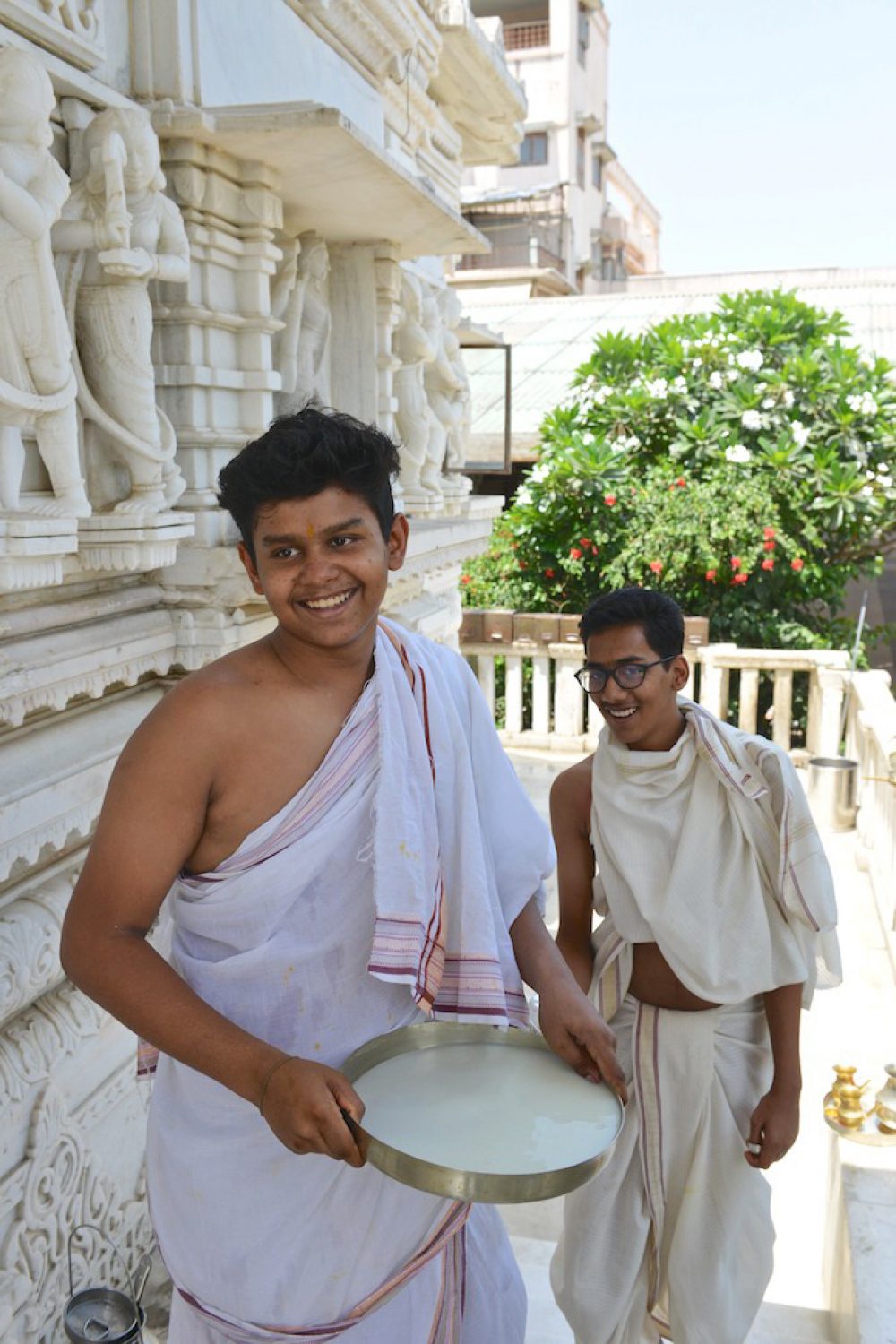
At Lodha Dham Temple lentils are transformed.
At Lodha Dham Temple, the boys take me to a back building where a sparse canteen hides beneath a library filled with leather-clad books. The public is welcome to join the monks for their vegetarian meals. For less than $1, I am given a stainless steel tray, which hired cooks quickly heap with rice, vegetable curries, roti and a bowl of soupy, yellow dal tarka.
Truthfully, the dal tarka is not much to look at. But it tastes nothing like it looks. The lentils themselves are creamy and sweet. Deeper than that are the spices, pops of coriander, chili and cumin, all grounded by earthy turmeric. There is no dairy, yet there is richness that suggests it. Sadly, the monks—who also do not cook—are little help untangling the delicious simplicity of the dish. For that, I would need to head back to Mumbai.
At APB Cook Studio, a sumptuous cooking school hidden in one of the city’s countless nondescript office buildings, instructor Shivani Unakar breaks it down. Rather than the singular stew it seems, dal tarka is built from two distinct components: the dal (lentils) and the tarka, a term that refers to a seasoning blend and the technique used to make it.
It’s one of many examples of the layering of flavors and textures that is another commonality of Indian cooking. Tarka is made by heating fat—often ghee, or clarified butter—then adding whole spices to it. The fat draws out the flavor from the spices yet leaves them intact, allowing them to add texture as well as taste to the finished dish.
Next, soft seasonings are added; often this means onions, ginger, garlic and fresh chilies. Finally, any ground spices are added and only briefly cooked, being prone to scorching if added earlier or cooked longer. This rich mixture then can become the start of a dish—including many curries—or the finishing flourish for a simpler one, as in dal tarka.
“Most things that we cook, we either start or finish with the tarka,” Unakar explains.
It all comes together as she walks me through a simple rendition of dal tarka from northern India. While split yellow lentils simmer in water, breaking down and becoming tender with little attention, Unakar tends to the tarka. “If you have this on its own,” she says, pointing a wooden spoon at the dal, “it’s really boring.”
She begins by heating ghee and toasting cumin seeds in it. When she adds sliced garlic and onions, the kitchen explodes with savory, spicy aromas. After five minutes, she adds a chopped tomato, allowing it to cook down yet retain its chunky texture. Finally, she finishes with a teaspoon each of turmeric and mild Kashmiri chili powder.
The mixture then is spooned over and stirred into individual bowls of dal. Once again, not a looker of a dish. But the taste! Creamy, sweet and smooth, all of it punctuated with bursts of spice and gentle heat. And there are layers of texture: meaty tomatoes, tender onions, lightly crunchy cumin seeds. This is comfort food defined.
Back at milk street, we found dal tarka an easy recipe to adapt. We stuck mostly to Unakar’s method and ingredients, varying mostly by adding some of the turmeric to the simmering lentils. We liked the deeper flavor the spice developed with the longer cooking.
While we preferred the nutty flavor ghee adds to the tarka, it’s not a pantry staple in the U.S. as it is in India. We found salted butter still produced a wonderful version. Delicious simplicity with depth, whether or not you tread on the grass.
More From Mumbai
